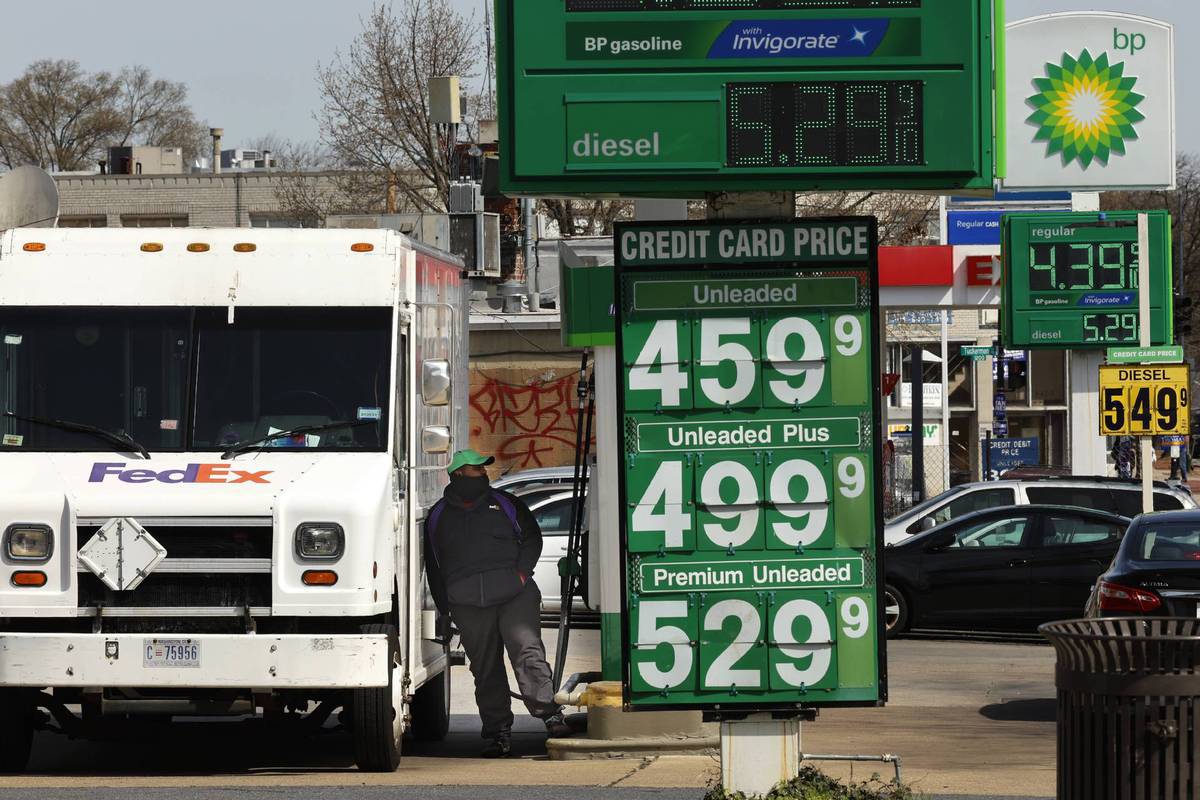
Gasoline prices hover around $4.00 a gallon for the least expensive grade at several gas stations in the nation's capital on April 11, 2022 in Washington, DC. [Photo/Agencies]
On April 28, the Bureau of Economic Analysis of the US Department of Commerce released its forecast for real gross domestic product in the first quarter, which at minus 1.4 percent was negative for the first time since the second half of 2020.
While the US job data was a little more upbeat-the unemployment rate fell to 3.6 percent in March, according to the US Labor Department-the possibility of stagflation is still strong given that the country is experiencing the worst inflation in 40 years.
Stagflation basically refers to the economic phenomenon in which stagnation and inflation coexist. In the 1970s and 1980s, due to its excessively loose monetary policy and the impact of the oil crisis, inflation and economic stagnation co-existed in the US.
And the Ukraine crisis and the COVID-19 pandemic have cornered the US in a similar situation today, making the prospects of the world economic recovery more uncertain.
To curb inflation, the Fed is raising interest rates. This has triggered the return of the US dollar from foreign markets, which necessarily raises the cost of developing economies' recovery, and increases the difficulty of monetary policy coordination of the world's major economies, resulting in a new anchor cycle for global asset prices and commodity and energy prices worldwide.
The largest boosters of the US economy in the first quarter were exports, which were up 17.7 percent year-on-year, and personal consumption, which was up 9.2 percent, and the main drags were housing investment, which fell by 5.9 percent, and imports, which declined 2.7 percent. These figures mean that the US will pay more attention to increasing exports, and the rebound of the US economy might not be sustainable, as investment will decline to evade the influence of inflation.
If the Fed continues to tighten monetary policy and reduces its balance sheet in the coming months, it is likely to keep inflation in check, but the higher interest rates will dampen effective investment, thus slowing the economic recovery and further exacerbating the risk of stagflation. If, on the other hand, the Federal Reserve slows down the pace of double tightening or reduces the magnitude of the tightening to stimulate the economy, inflation will continue.
That makes it easy to get caught in a policy dilemma. Therefore, the possibility that the US economy will fall into short-term substantial stagflation is rising.


